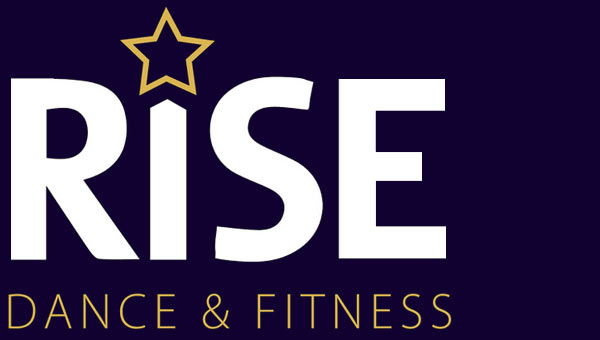In the early years of a child’s life, developing fundamental movement skills lays the foundation for their physical, cognitive, and social development. These skills encompass basic movements like running, jumping, throwing, and balancing, which form the building blocks for more complex movements later in life. Engaging in dance at a young age can be a wonderful way to foster and enhance these fundamental movement skills.
In this blog post, we will explore the importance of fundamental movement skills for young children and how starting dance early can contribute to their development.
The Significance of Fundamental Movement Skills (FMS) : Fundamental movement skills are vital for a child’s overall growth and development. Here’s why they hold such importance:
1. Physical Fitness: Fundamental movement skills provide the groundwork for physical fitness and an active lifestyle. They enhance a child’s agility, coordination, balance, and strength, enabling them to engage in various physical activities with ease and enjoyment.
2. Motor Skill Development: Mastering fundamental movement skills contributes to the development of fine and gross motor skills. These skills encompass both large movements, like running and jumping, and fine motor skills, such as hand-eye coordination for activities like catching or throwing a ball.
3. Cognitive Growth: The development of fundamental movement skills stimulates cognitive growth. Children learn to analyse and solve problems as they coordinate their movements and navigate through different physical challenges. This process fosters critical thinking, spatial awareness, and decision-making abilities.
4. Self-Confidence and Self-Esteem: Proficiency in fundamental movement skills boosts a child’s self-confidence and self-esteem. As they acquire competence in their physical abilities, they become more willing to take on new challenges and explore their capabilities, leading to improved self-belief and a positive self-image.
Now let’s delve into the various fundamental movement skills and explore how dance can contribute to their development:
1. Locomotor Skills: These skills involve movements that enable children to navigate their environment. Running, jumping, hopping, skipping, and galloping are all examples of locomotor skills. Engaging in dance helps children refine these skills by incorporating them into choreographed movements, encouraging proper form, coordination, and control.
2. Manipulative Skills: Manipulative skills involve the control and coordination of objects. Throwing, catching, kicking, and striking are all examples of manipulative skills. Dance can incorporate props such as scarves, ribbons, or balls, providing opportunities for children to practice these skills in a creative and expressive way.
3. Balance and Stability: Developing balance and stability is essential for overall coordination and control of movements. Dance routines often incorporate movements that challenge balance, such as turns, spins, and balancing on one leg. By practicing these movements, children improve their balance and stability, leading to greater overall coordination.
4. Body Awareness: Body awareness involves understanding and perceiving one’s own body and its movements in space. Dance promotes body awareness through activities that require spatial orientation, body positioning, and coordination with others. Children learn to be aware of their bodies, their movements, and the space they occupy while dancing.
5. Spatial Awareness: Spatial awareness is the ability to understand and perceive the relationship between oneself and objects or people in the surrounding space. Dance helps develop spatial awareness by requiring children to navigate the dance floor, move in relation to others, and execute movements within defined boundaries. This skill enhances their sense of space, direction, and positioning.
6. Coordination: Coordination refers to the ability to synchronize different parts of the body to perform smooth and efficient movements. Dance demands coordination between the upper and lower body, as well as between different body parts. By practicing dance movements, children develop better coordination and control over their bodies.
7. Rhythm and Timing: Dance is closely tied to rhythm and timing. Children learn to move in sync with the beat of the music, developing a sense of rhythm and timing. This skill not only enhances their ability to dance but also translates to other activities requiring timing and coordination.
8. Agility and Flexibility: Dance involves a variety of movements that require agility and flexibility. By practicing dance steps and routines, children improve their agility, which refers to their ability to move quickly and change directions with ease. Additionally, dance helps enhance flexibility as children stretch and elongate their muscles through various dance movements.
Dance provides a great approach to developing fundamental movement skills. It offers a dynamic and engaging platform for children to practice and refine their locomotor skills, manipulative skills, balance, body awareness, spatial awareness, coordination, rhythm, timing, agility, and flexibility. By incorporating these skills into expressive movements, dance empowers children to explore their physical potential and lays a strong foundation for their overall physical development.
Conclusion: Engaging in dance from a young age offers numerous benefits for a child’s fundamental movement skills. Through dance, children have the opportunity to develop and refine various skills essential for their physical, cognitive, and social growth. Locomotor skills, manipulative skills, balance, body awareness, spatial awareness, coordination, rhythm, timing, agility, and flexibility are all nurtured through the joy and expression of dance.
Here at RISE our earliest dance and movement classes “Little Steps” start at age 3-5 and are the perfect way to encourage children to develop and excel in these skills!
